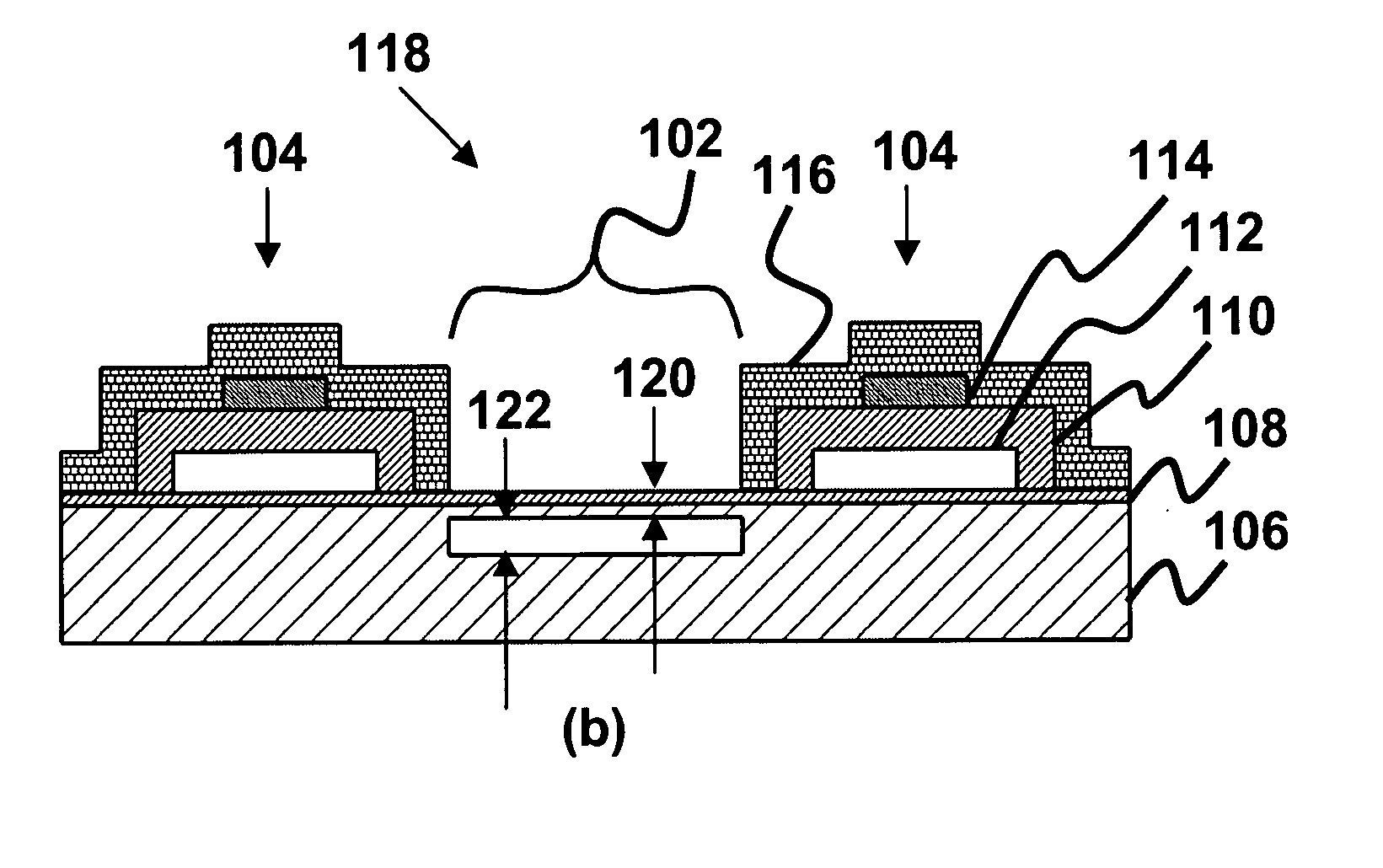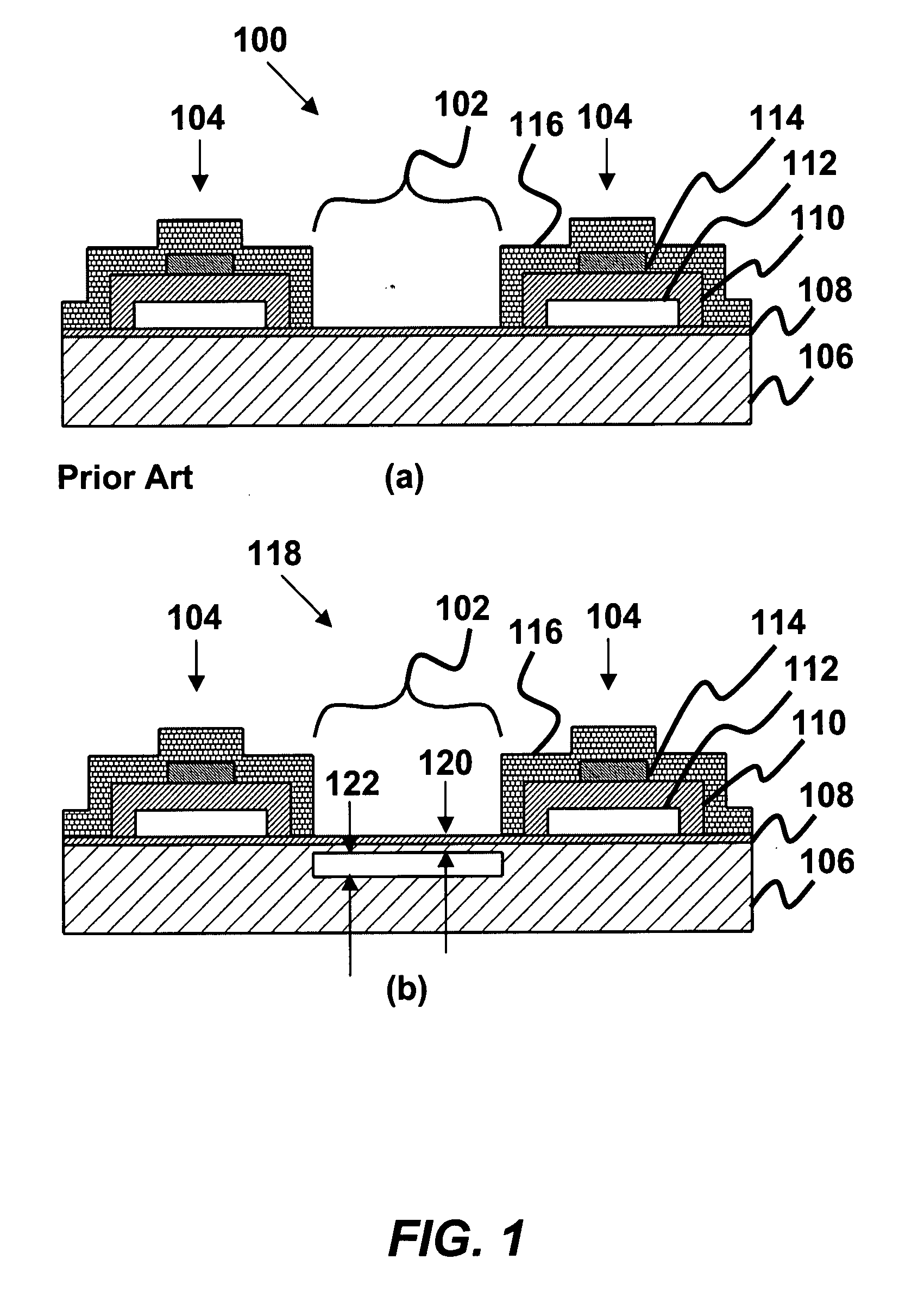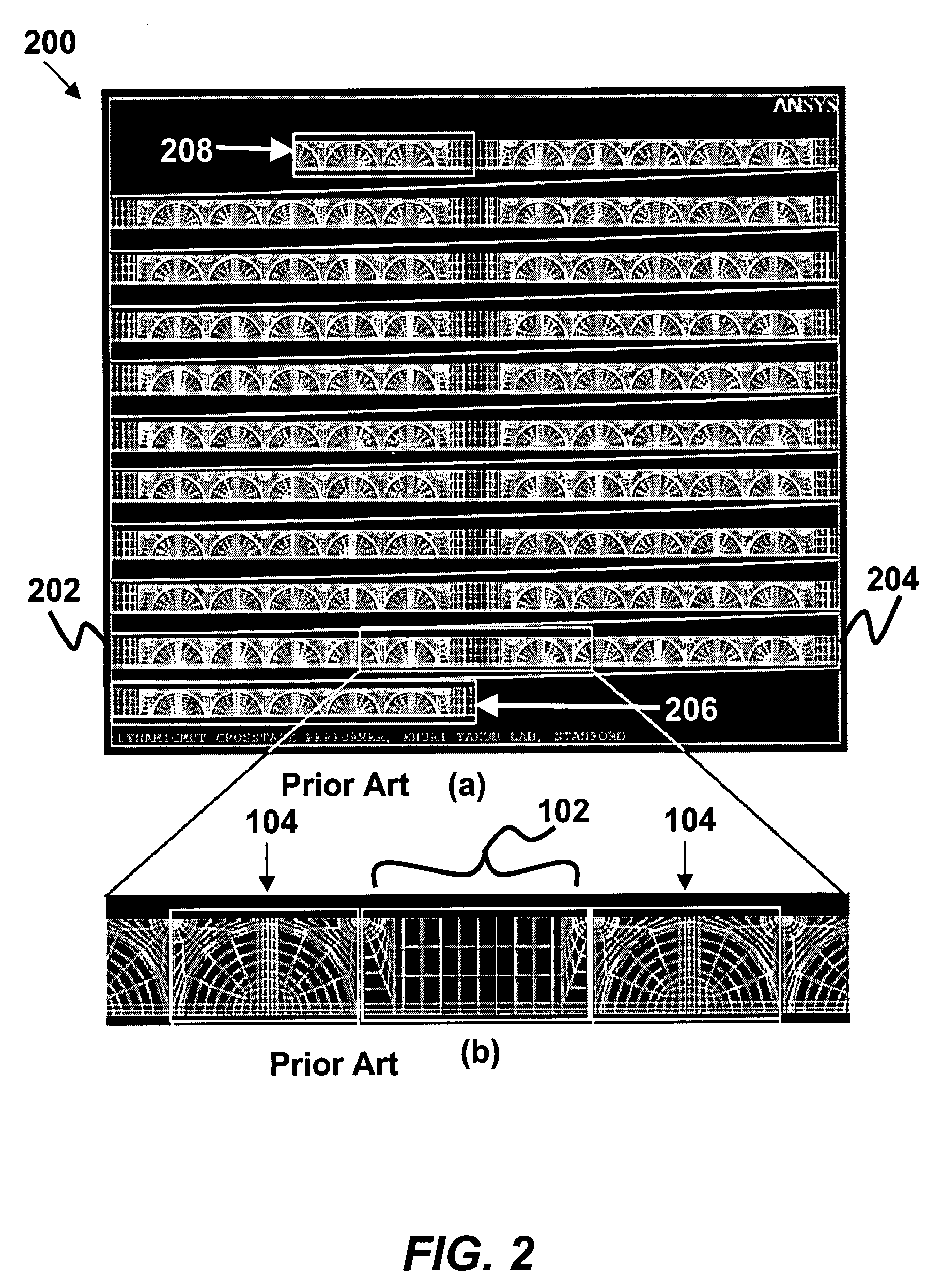Acoustic crosstalk reduction for capacitive micromachined ultrasonic transducers in immersion
a micro-machined ultrasonic and capacitive technology, applied in the direction of generator/motor, mechanical vibration separation, instruments, etc., can solve the problems of reducing the dispersion guided mode of an ultrasonic signal, and the performance of the transducer in immersion is degraded, so as to reduce crosstalk and reduce capacitance
- Summary
- Abstract
- Description
- Claims
- Application Information
AI Technical Summary
Benefits of technology
Problems solved by technology
Method used
Image
Examples
Embodiment Construction
[0035]Although the following detailed description contains many specifics for the purposes of illustration, anyone of ordinary skill in the art will readily appreciate that many variations and alterations to the following exemplary details are within the scope of the invention. Accordingly, the following preferred embodiment of the invention is set forth without any loss of generality to, and without imposing limitations upon, the claimed invention.
[0036]The premise of crosstalk reduction stems from several observations and how they relate to the current invention to reduce the crosstalk, the observations are as follows:
[0037]1) The main crosstalk mechanism is the dispersive guided mode (−23 dB) propagating in the fluid-solid interface compared to A0 (−40 dB) and S0 (−65 dB) Lamb Wave modes. The current invention reduces the crosstalk and impedes the propagation of this guided mode.
[0038]2) This guided mode disappears close to 4 MHz, corresponding to the membrane resonance in immers...
PUM
 Login to View More
Login to View More Abstract
Description
Claims
Application Information
 Login to View More
Login to View More - R&D
- Intellectual Property
- Life Sciences
- Materials
- Tech Scout
- Unparalleled Data Quality
- Higher Quality Content
- 60% Fewer Hallucinations
Browse by: Latest US Patents, China's latest patents, Technical Efficacy Thesaurus, Application Domain, Technology Topic, Popular Technical Reports.
© 2025 PatSnap. All rights reserved.Legal|Privacy policy|Modern Slavery Act Transparency Statement|Sitemap|About US| Contact US: help@patsnap.com



